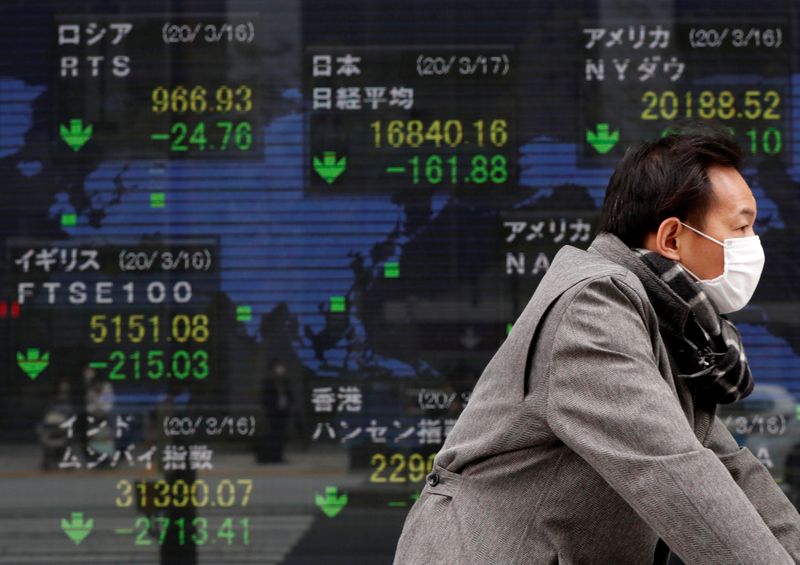This post was originally published on this site

SYDNEY (Reuters) – Asian shares were mixed on Thursday after a choppy day of Wall Street trade, thanks in part to a disappointing U.S. jobs report, while the greenback languished near 2-1/2 year lows on growing optimism of a coronavirus vaccine.
Britain became the first Western country to approve a COVID-19 vaccine, with 800,000 doses of the Pfizer (NYSE:PFE) and BioNTech vaccine available for those at high risk starting next week.
The U.S. Food and Drug Administration is holding its advisory committee meeting next week, while New York Governor Andrew Cuomo has said the state’s first delivery, enough for 170,000 residents, is expected on Dec. 15.
Hopes that the pandemic, which has so far killed nearly 1.5 million people globally, will finally be brought under control sparked a risk-on rally in currency markets with the Australian and New Zealand dollars advancing against their U.S. counterpart.
The dollar index slipped to a fresh 2-1/2 year low of 90.948 on Thursday and was last at 90.976. [FRX/]
“Currency investors are taking on more risk following the latest vaccine breakthroughs, options show,” Morgan Stanley (NYSE:MS) said in a note.
Hopes of a fiscal support package in the United States also boosted investor optimism.
But share traders were less enthused.
E-Mini futures for S&P500 were a shade weaker as were Dow futures. Futures for Eurostoxx 50 were down 0.1%, those for Germany’s Dax eased 0.2% and London’s FTSE futures fell 0.4%.
In Asia, Japan’s Nikkei was unchanged while South Korea’s KOSPI and Australia’s benchmark index were about 0.4% higher each. Chinese shares opened a tad lower, with the blue-chip CSI300 index off 0.2%. New Zealand shares were weaker too.
That left MSCI’s broadest index of Asia-Pacific shares outside of Japan up 0.4% following two straight days of gains.
“Markets are quite likely to muddle through from here,” said Michael Frazis, portfolio manager at Frazis Capital Partners in Sydney.
“The vaccine is increasingly priced in. A couple of months ago, no one knew how deep coronavirus would be, or what the outcome of the election was. Now both sources of uncertainty have been removed.”
Worries that the U.S. economy may be decelerating weighed on shares after U.S. private payrolls showed fewer jobs than expected were added in November as growing new COVID-19 infections led to additional business restrictions.
Overnight, Wall Street swung between red and green territories but eventually ended a tad firmer. The Dow Jones and the S&P 500 gained 0.2% each while the tech-heavy Nasdaq was barely moved.
In currencies, the risk-sensitive Aussie hit a more than two-year high of $0.7420 overnight and was last at $0.7410. Its kiwi cousin was last at $0.7063, hovering near the highest since May 2018.
The euro fetched $1.2118, having reached its loftiest level since late April 2018 in the previous day’s trade.
In commodities, oil prices slipped on Thursday as producers including Saudi Arabia and Russia locked horns over the need to extend record production cuts set in place in the first wave of the COVID-19 pandemic. [O/R]
Brent crude was down 9 cents at $48.16 a barrel while U.S. light crude eased 14 cents to $45.14.
Gold was slightly firmer at $1,832.6 an ounce.


